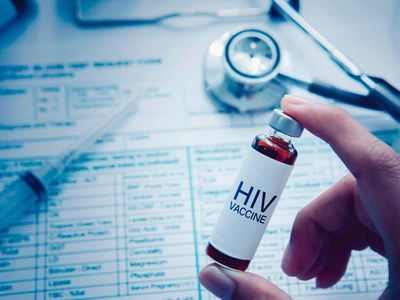
The number of people on lifelong antiretroviral treatment in Kenya has almost doubled, resulting in a 90 percent viral suppression rate among those on treatment.
Viral suppression means having less than 200 copies of HIV per milliliter of blood. It enables people living with HIV to live long, healthy lives with zero risk of sexual transmission.
The United Nations Programme on HIV/Aids (UNAIDS) progress report on the epidemic shows that Kenya has reached the 95-95 targets, with 95 percent of people living with HIV knowing their status and 95 percent of those knowing they are receiving life-saving antiretroviral treatment.
This is an improvement on the previous year's rates of 94-94-89 percent.
Kenya has also met the 2025 target of 95-90-86 percent and is on track to meet the 2030 target set by UNAIDS to close gaps in HIV treatment coverage and outcomes.
The UNAIDS target is for countries to reach the 95-95-95 HIV testing, treatment, and suppression targets.
The progress has been driven by the introduction of the Pre-Exposure Prophylaxis (PrEP) programme for HIV prevention, with a 64 percent uptake among eligible people.
Kenya is the second African country to successfully implement the PrEP programme for HIV prevention, in addition to other interventions put in place by the government and stakeholders.
Recently, Kenya launched the National Multisectoral HIV Prevention Acceleration Plan 2023-2030 to eliminate new HIV infections by 2030.
The report also shows that Kenya has reduced annual new HIV infections by 75 percent and is on track to hit 90 percent by 2030.
“World leaders pledged to end the Aids pandemic as a public health threat by 2030, and they can uphold their promise, but only if they ensure that the HIV response has the resources it needs and that the human rights of everyone are protected,” said Winnie Byanyima, UNAIDS executive director.
There are currently 1.4 million people living with HIV in Kenya.
Despite progress, the HIV response faces challenges such as funding shortfalls due to dwindling external funding as Kenya moves to lower middle-income status.
Experts emphasise that domestic resource mobilisation is, therefore, crucial to sustain the gains made and to scale up the national response to HIV and AIDS.
"External financing for Kenya’s health programmes has significantly declined as Kenya has graduated to a lower middle-income country.
"Therefore, domestic resource mobilization to finance gaps left by donors is imperative for Kenya to secure the gains made and scale up the national response to HIV and AIDS,” said Peter Arimi, project director, Health System Technical Support Unit at NASCOP and NACC, Kenya.
→ Lowoko@ke.nationmedia.com